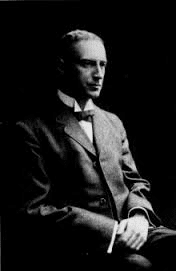After trying to contact Dr. Wallace Clement Sabine’s spirit for several nights, we were able to re-establish communication with him by way of a séance. Our discussion about reverberation time (RT) continues from part 1 of this blog series…
MC: Hello Dr. Sabine. May I call you Wallace?
WS: No.
MC: May I call you Wally?
WS: No.
MC: Well, like last time, I think that we have gotten off to a great start. Last time we were discussing RT and how this may be a significant factor in the acoustics of performance halls. Do you recall that?
WS: No.
MC: Well, we were, so please go back and read your notes that can be found here in part 1. Essentially we talked about the various parameters that together constitute optimal acoustics in a performance venue and we focused on RT as one of those factors. One thing that came out in our discussion was that the ratio of early reflections (perhaps at 80 msec) to longer reflections can be used to convey some information about the quality of a performance hall.
WS: Yes.
MC: Well, was it related to the finding that this ratio (known as C80) correlates highly with clarity (temporal definition) and that a high ratio implies good clarity with the direct sound and the early reflections arriving earlier than 80 msec to the remainder of the energy arriving later than 80 msec?
WS: Yes.
MC: And also that a low ratio indicates a lack of early reflections and excessive reverberation. One reason for the success and lasting usefulness of rectangular music halls is that strong early reflections are provided by the side walls as well as the ceiling, thereby enhancing clarity.
WS: Yes.
MC: Hmm. Let’s turn to another aspect of RT. Is it true that the sound quality of certain types of music are optimized with certain RTs and indeed, that is why they came to be? For example, organ music has a lot of sustained notes that echo around and are best heard in larger venues with longer RTs such as 1.5 – 2.5 seconds. Or perhaps, organ music became well-loved because the halls of the time had RTs between 1.5 and 2.5 seconds?
WS: Yes.
MC: I guess that we are not getting a lot out of you today. Let me try a different tack. I will give you a type of music and you tell me the desired RT for each type….
WS: Yes.
MC: Excellent….let’s go! Opera.
WS: 1.3-1.6 seconds.
MC: Wow! Chamber music.
WS: 1.0-1.5 seconds.
MC: Concert halls…
WS: 1.7-2.0 seconds.
MC: Romantic music.
WS: 2.0-2.3 seconds.
MC: Live theatre.
WS: 1.0 seconds.
MC: Speech in conference rooms.
WS: 0.4-0.9 seconds.
MC: Well thank you for all of that information. Am I correct in assuming that the reason for optimal speech in conference rooms (and presumably class rooms) is that the less the reverberation, the better?
WS: Yes.
MC: Oh dear, I guess we’re back to shorter answers!
WS: Not at all! In any space it’s always a balance between being too live, and too dead, if you’ll excuse the pun! RTs of 0.1 seconds would make the room sound stale and dead and in that same room, if the RT was 5 seconds, nobody would be able to understand anything. And you are correct, that for much of history, the music that was played was a direct reflection of the architecture that was available at that time. I don’t think that organ music would be (or is) as appreciated as much today in a multi-purpose room as it was with the large cathedrals of yesteryear.
But even RT has its limitations. For example, the Boston Symphony Hall, the San Francisco Davies Hall, and the London Barbican Large Hall all have similar RTs at about 1.7-1.85 seconds. Yet, the first two halls sound great but the Barbican hall only has been rated as fair-to-good sound quality.
MC: Well, can I talk now. You seem to want to grab the podium! I think that we are done and I will let you get back to whatever you were doing. Goodby!
WS: Well, I wasn’t finished, I wanted to talk abo…







